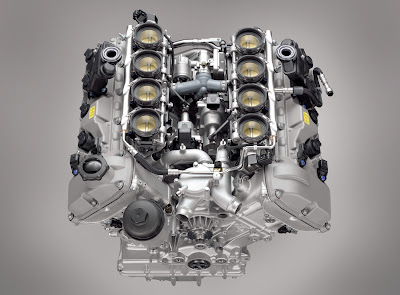1968. Richard Nixon was elected president. Fighting raged in Vietnam with no end in sight. America watched "Hawaii Five-O," "Mayberry RFD," and "Here's Lucy" on an ever increasing number of color television sets. Robert Kennedy and Martin Luther King Jr. were assassinated. "Oliver" won the Oscar for Best Picture. Otis Redding was sittin' on the dock of the bay. And BMW introduced the 2002 in the United States.
Launched in Europe in late 1966 by a company still struggling to right itself after WWII, the 2002 summarily defined the modern compact sport sedan (even though it had only two doors) and saved BMW by doing so. Bayerische Motoren Werke was anything but a high-volume carmaker back then, and although it had a few successes to its credit, it appeared destined to remain a second- or third-tier player behind German giants like Volkswagen and Mercedes.
The 2002 changed all that. It imbued the everyday car with a measure of sportiness and sophistication, demonstrated that performance means more than going fast in a straight line, and moved BMW a notch up the automaker food chain. The 2002's combination of sports-car handling, room for four, an airy greenhouse, and a large trunk, plus BMW's growing reputation for engineering and high-quality construction, came together in a car that caught the attention of enthusiasts the world over who didn't want a four-door, yet needed something more than a rickety British two-seater. It made a great economy car, a great race car, and served many needs in between. BMW sold more than 860,000 2002s worldwide before it was replaced in 1977 by what was then-and is today-called the 3 Series.
 BMW is well aware of the 2002's status as a corporate, automotive, and cult icon. And, like most German carmakers, it does a good job of nurturing its heritage. The division that provides technical, parts, and service support is called Mobile Tradition. In early 2005, the folks at Mobile Tradition realized they stocked or could supply about 90 percent of the parts needed to not only maintain or restore a 2002, but to build a virtually brand-new one. So they did.
BMW is well aware of the 2002's status as a corporate, automotive, and cult icon. And, like most German carmakers, it does a good job of nurturing its heritage. The division that provides technical, parts, and service support is called Mobile Tradition. In early 2005, the folks at Mobile Tradition realized they stocked or could supply about 90 percent of the parts needed to not only maintain or restore a 2002, but to build a virtually brand-new one. So they did.
A "Glass Workshop" was constructed in the shadow of BMW's multicylindrical world headquarters in Munich. The project, based on an original 1970s body shell, was spearheaded by Klaus Kutscher, head of the BMW Mobile Tradition workshop, and master mechanic Arthur Herrmann (see sidebar). The decision to craft the car as a tii model was made early on. The fuel-injected tii, sold in the U.S. from 1972 to 1974 (all prior and later 2002s employed carburetors, still common in those days) was intended to comply with emissions requirements and the onset of unleaded fuel. But the benefit was much more power and increased driveability, making the tii the best-performing and most highly sought model among all 2002s.
The project took about 11 months, beginning in May 2005. The Mobile Tradition 2002 made its debut at the Techno Classica show-one of Europe's largest and most significant classic-car conventions-in Essen, Germany, in April 2006. It traveled to America four months later, stopping in Northern California during the Monterey/Pebble Beach weekend in August. And that's where we pirated it off for a day of photography and hard driving through some of the Peninsula's best roads.
 In the metal, this new/old 2002 captivates. Looking period-correct in brilliant Inca Orange-the same color as Motor Trend's 2002 tii test car featured in our January 1972 issue-Mobile Tradition's toy is downright cuddly. The assembly workmanship and finish are first-rate. It all looks, feels, and even smells factory original (if a bit better), yet it's not overrestored. All the cues are 1970s-right. Chrome and satin-finished trim, narrow alloy wheels, hand-cranked windows and metal sunroof, businesslike black instrument panel, dished three-spoke steering wheel, etc. The final touch: "Cocoa" floormats.
In the metal, this new/old 2002 captivates. Looking period-correct in brilliant Inca Orange-the same color as Motor Trend's 2002 tii test car featured in our January 1972 issue-Mobile Tradition's toy is downright cuddly. The assembly workmanship and finish are first-rate. It all looks, feels, and even smells factory original (if a bit better), yet it's not overrestored. All the cues are 1970s-right. Chrome and satin-finished trim, narrow alloy wheels, hand-cranked windows and metal sunroof, businesslike black instrument panel, dished three-spoke steering wheel, etc. The final touch: "Cocoa" floormats.
























